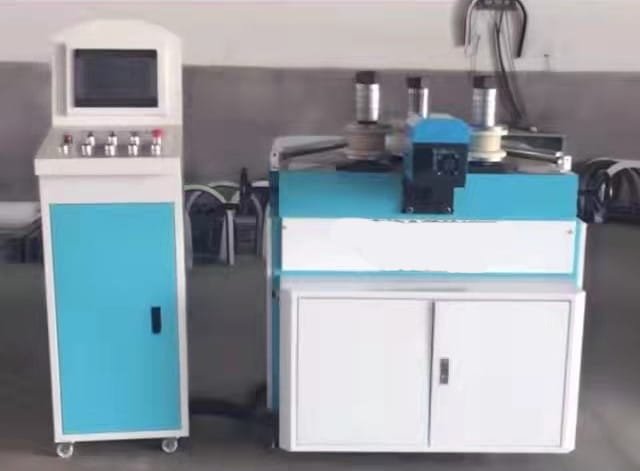The double-head cutting saw, a versatile and efficient tool in the metalworking industry, has seen significant advancements and holds promising prospects for future development. This innovative machine combines precision, power, and versatility, making it an essential tool for a wide range of applications.
Historical Evolution and Current Status
The concept of the double-head cutting saw has evolved over time, driven by the need for more efficient and accurate cutting solutions in various industries. Initially, single-head saws dominated the market, but as technology progressed, the double-head version emerged, offering double the cutting capacity and efficiency. Today, double-head cutting saws are widely used in industries such as manufacturing, construction, and automotive, where they are valued for their ability to handle large-scale materials quickly and precisely.
Technical Features and Advantages
Double-head cutting saws are characterized by their dual cutting heads, which operate simultaneously to increase productivity. These machines are equipped with advanced features such as numerical control systems, automatic feeding mechanisms, and precision clamping devices. These features ensure accurate positioning of materials, smooth cutting operations, and minimal waste.
Moreover, double-head cutting saws utilize high-quality saw blades made from materials like carbide or high-speed steel, which are capable of cutting through a variety of metals, including aluminum, steel, and stainless steel. The blades are often designed with specialized tooth patterns to optimize cutting performance for different materials and applications.
Market Demand and Applications
The demand for double-head cutting saws is driven by several factors, including the increasing need for automation in manufacturing processes, the growing trend towards customization and short production runs, and the continuous pursuit of cost efficiency. These saws are particularly suited for applications requiring high-precision cuts, such as in the aerospace, automotive, and electronics industries.
In the aerospace industry, for example, double-head cutting saws are used to cut complex shapes and sizes from lightweight but strong materials like aluminum alloys and composites. In the automotive sector, they are employed for the production of components such as frame structures and exhaust systems, where precision and efficiency are crucial.
Future Prospects
Looking ahead, the prospects for double-head cutting saws are bright. As industries continue to adopt advanced manufacturing techniques, such as additive manufacturing and precision machining, the demand for high-quality cutting tools will increase. Double-head cutting saws, with their ability to provide precise, efficient, and cost-effective cutting solutions, are well-positioned to meet this demand.
Innovations in saw blade technology, such as the development of new materials and coatings, will further enhance the performance of double-head cutting saws. Additionally, advancements in automation and robotics will enable these saws to be integrated into more complex and automated manufacturing systems, increasing their versatility and productivity.
Furthermore, as concerns about sustainability and environmental impact grow, double-head cutting saws will play an important role in reducing material waste and energy consumption during the cutting process. Their ability to handle large-scale materials efficiently and accurately will help industries achieve more sustainable manufacturing practices.
In conclusion, the double-head cutting saw is a powerful and versatile tool with a promising future. With continuous innovations in technology and increasing demand from various industries, these saws are poised to play a crucial role in shaping the future of manufacturing.



